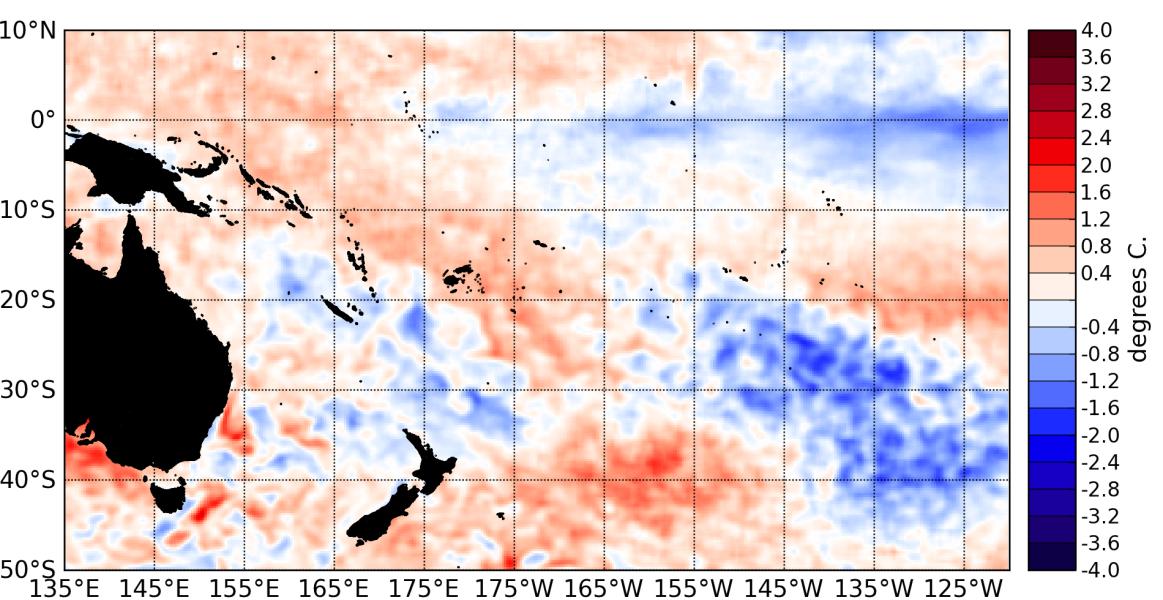The conditions in the tropical Pacific are neutral (neither El Niño nor La Niña). While the equatorial Sea Surface Temperatures (SSTs) in the eastern Pacific are currently slightly cooler than normal, they fall within the neutral range. All atmospheric indicators are close to their climatological values. Between December 2012 and January 2013, the main changes in SSTs have been a further cooling of the Pacific equatorial waters to the east of the Dateline as well as a cooling of the subtropical eastern Pacific Ocean (east of 155°W).
January NINO values are –0.2°C for NINO3.4 (down from –0.08°C in December 2012) and -0.3°C for NINO3 (+0.06°C in December 2012) and +0.2°C for NINO4 (+0.5°C in December 2012).
Warmer than normal subsurface temperatures exist along the Equator at about 100m depth west of the Dateline, while cooler than normal temperatures exist east of the Dateline.
Surface winds along the Equator are close to climatology. Convection has intensified along the Equator, to the west of the Dateline, indicating an ITCZ south of normal.
The latest value for the TRMM ENSO index for the 30 days to February 2nd is –0.84 (on La Niña side of neutral) and the monthly SOI for January is –0.1.
A strong Madden – Julian Oscillation moved into Australasian longitudes over the last two weeks of January and is forecast to remain stationary and weaken over the coming two weeks.
All the climate models that NIWA monitors indicate a very high likelihood for neutral ENSO conditions to persist throughout the first quarter of 2013, with sea surface temperatures remaining generally warmer than average along the Equator west of the Dateline and cooler further east.

